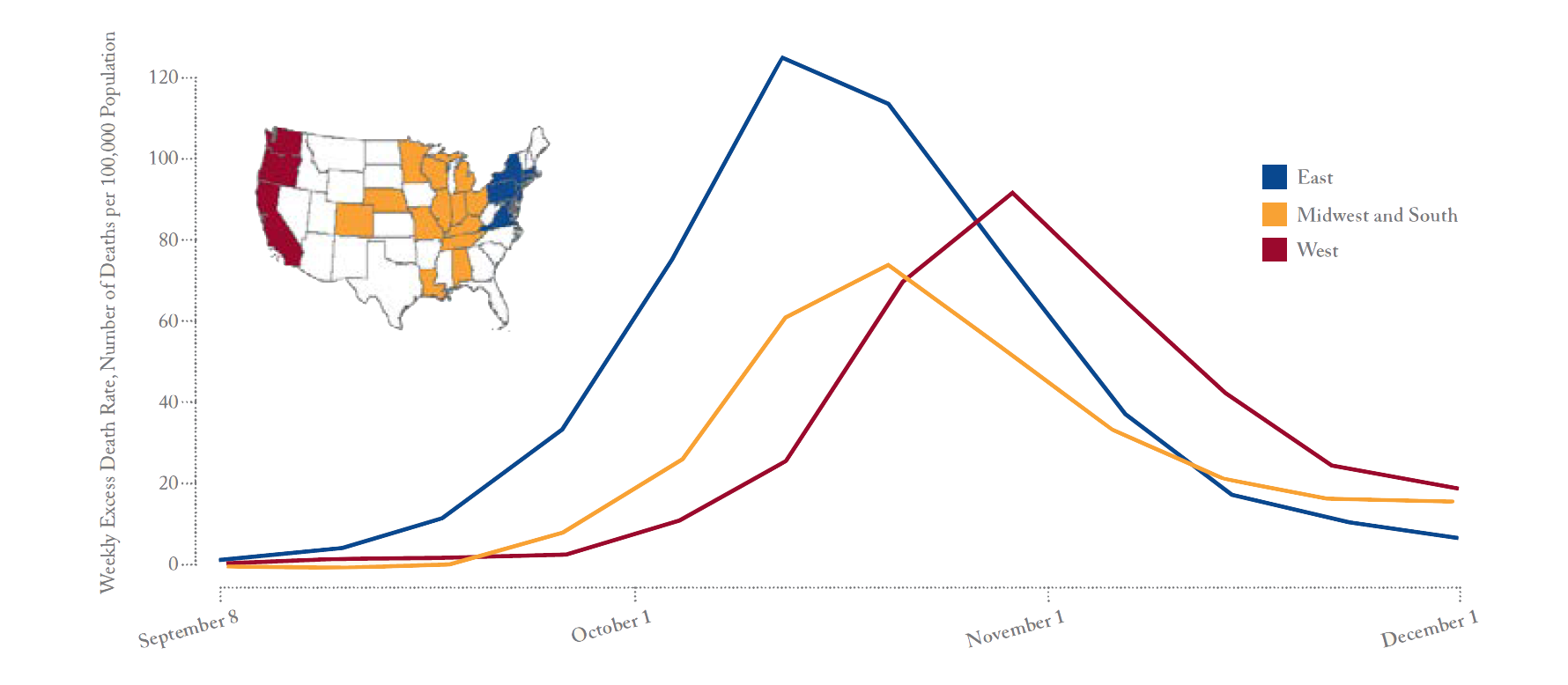Charts & Graphs
Flu Fallout
A majority of the estimated 675,000 American deaths from the influenza pandemic of 1918–19 occurred during the second wave, which swept the country throughout the fall of 1918.

Women’s suffragist Carrie Chapman Catt attends the senatorial debate over the Nineteenth Amendment on September 26. The amendment narrowly fails to pass, and the suffragists turn their attention to flipping enough seats in November’s midterms to ensure its passage the following year. Although the campaign succeeds, Catt spends October too ill with the flu to help.
Philadelphia’s flu outbreak begins in mid-September, yet city authorities wait until early October to ban public gatherings. On September 28 a parade celebrating war bonds is allowed to proceed as planned, attracting around 200,000 spectators. Seventy-two hours later every hospital bed in the city is filled.
“A strong and growing belief exists in the minds of the public,” a Baltimore public health official writes on October 11, “that alcoholic drinks act as a preventative of influenza.” As a result, many cities overturn wartime restrictions on bars, liquor stores, and distilleries. After World War I, a flu resurgence in 1919–20 helps to shape prohibition legislation: the only way to legally acquire alcohol under the Volstead Act is with a medical prescription.
The Dayton Triangles, one of only three professional football franchises to retain enough players to field a team by October 13—the start of the 1918 season—goes undefeated thanks in part to its absorption of talent from teams that had folded. Two years later they host the first game in what would become the NFL.
At an October 14 meeting, members of the National Association of the Motion Picture Industry agree to an immediate four-week moratorium on the production and distribution of new films. When studios reopen in November, many Hollywood stars, including Lillian Gish, quickly fall ill. Scores of independent studios and theaters never financially recover, allowing conglomerates like Paramount to expand considerably.
Facing a nationwide crackdown on public expectoration (New York City police arrest five hundred spitters on a single October day), many tobacco chewers switch to smoking, even in cities with compulsory mask-wearing orders. “It has now become a sort of unwritten law,” one San Francisco journalist writes on October 29, “that a man may lift his mask on the street if he has a cigar, pipe, or cigarette in his mouth.”
When World War I officially ends on November 11, Americans flood the streets in celebration. “For twenty-four hours,” writes one doctor on duty at a Chicago hospital, “all the interns were involved in a confusion of alcohol, scalp wounds, blood, harsh dry coughs, gasping breaths, death, and squalling babies being delivered from mothers dying from influenza.”